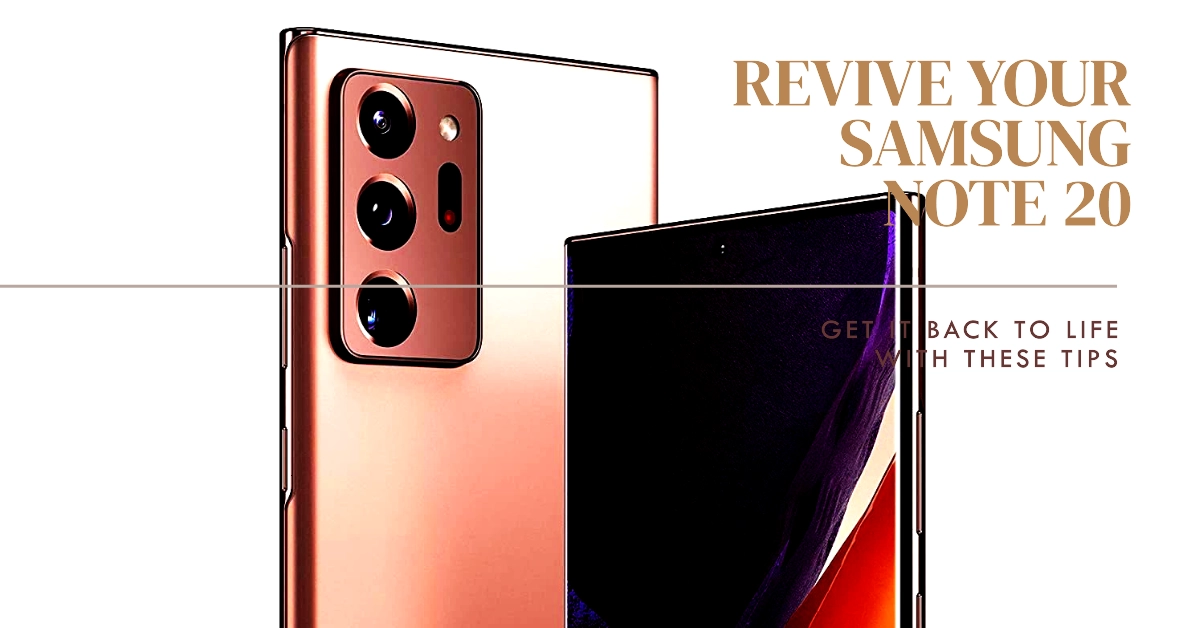If your Samsung Galaxy Note 20 has a black screen and doesn’t respond to power-on attempts, it can be a source of significant inconvenience. Fortunately, several potential solutions exist to address this problem.
This guide offers a systematic troubleshooting approach to help you restore your device’s functionality.
“My Samsung phone has worked fine for ages, but lately it sometimes gets stuck on the Samsung logo when I try to turn it on. It usually works after a few tries, but it’s worrying me.”
Common Causes
1. System Software Disruptions
- Incomplete or Corrupted Updates: Interruptions during system updates or inherent errors within the update package can lead to corrupted system files, preventing the phone from completing the boot process.
- Third-party App Conflicts: Poorly optimized or incompatible third-party applications can introduce conflicts with the core operating system, hindering critical startup functions.
2. Hardware Malfunctions
- Internal Component Failure: Defects or failures within internal hardware components (such as the display, logic board, or battery) can disrupt the essential boot sequence of the device.
- Insufficient Power: A severely depleted or failing battery may not reliably supply the necessary power for a complete system startup.
- External Storage Issues: Malfunctioning or corrupted SD cards can introduce errors during the boot process, causing the device to stall.
3. Unsuccessful Firmware Modifications
- Failed Rooting Attempts: Incorrect or incomplete rooting procedures can compromise essential system files and introduce instabilities, preventing the device from booting properly.
- Custom ROM Installation Errors: Issues during the installation of custom ROMs (modified versions of the operating system) can lead to system corruption and boot loop problems.
Additional Considerations
- Physical Damage: Internal component damage caused by impacts, drops, or liquid exposure can significantly impact the device’s ability to start up.
- Overheating: Exposure to excessive heat can cause temporary or permanent damage to internal components, leading to malfunctions during the boot process.
Troubleshooting Solutions
1. Forced Restart
- Procedure: Press and hold the Volume Down and Power (Side) buttons simultaneously for approximately 10-20 seconds. Release when the Samsung logo appears.
This simulates a battery disconnect, resolving minor software issues that might be causing the black screen.
2. Verify Battery Charge
- Procedure: Connect your phone to its original charger and allow it to charge for at least 30 minutes before attempting to power it on.
A deeply discharged battery may prevent your device from turning on.
3. Inspect Charging Components
- Procedure: Examine your charging cable and power adapter for signs of damage. Test the wall outlet with a different device. If possible, try an alternative cable and charger.
Faulty charging components can hinder the ability of your Galaxy Note 20 to power on.
4. Safe Mode Access
- Procedure: Power off your phone (if possible). Press and hold the Power button until the Samsung logo appears, then release and immediately press and hold the Volume Down button. Continue holding until the device restarts in Safe mode (indicated in the lower-left corner).
Safe mode isolates potential problems caused by third-party apps. If your device functions in Safe mode, consider uninstalling recently installed apps to locate the problematic one.
5. Soft Reset
- Procedure: Press and hold the Power and Volume Down buttons for about 45 seconds, or until the device restarts.
A soft reset can resolve software issues that may not be addressed by a forced restart.
6. Recovery Mode: Wipe Cache Partition
- Procedure: Power off your device. Press and hold the Power and Volume Up buttons until the Samsung logo appears. Use the Volume buttons to select “Wipe cache partition” and press the Power button to confirm. Select “Reboot system now”.
This clears potentially corrupted temporary system files.
7. Factory Reset (Data Loss)
Important: This process erases all data on your device. Create a backup before proceeding.
- Procedure: Enter Recovery Mode, select “Wipe data/factory reset,” confirm with “Yes,” and then select “Reboot system now.”
Use this as a last resort if other solutions fail. It offers a clean software slate but results in data loss.
If the black screen persists after these steps, consider seeking assistance from a qualified Samsung repair technician, as a hardware issue may be present.
FAQs
1. Q: Is data retrieval possible from a Samsung phone experiencing a boot loop?
- A: The potential for data retrieval depends on the root cause of the boot loop. Data extraction may be feasible in cases of software-related issues using specialized tools or professional services. However, hardware failures can make recovery significantly more complex.
2. Q: Are boot loop issues likely to resolve without intervention?
- A: Boot loops stemming from underlying software or hardware malfunctions generally do not correct themselves. Addressing the problem proactively through troubleshooting or repair is often necessary.
3. Q: Can repeated restart attempts worsen a boot loop condition?
- A: While repeated restarts can be a preliminary troubleshooting step, excessive attempts may exacerbate the situation, particularly if the cause is hardware-related. Continual restarts can strain components and potentially lead to further complications.
4. Q: Can malicious software (malware) cause a Samsung device to become stuck on the logo during startup?
- A: While less frequent than other causes, certain malware strains have the potential to disrupt critical system functions, potentially leading to boot failures and devices becoming stuck on the logo.
5. Q: Will performing a factory reset always resolve a boot loop issue on a Samsung phone?
- A: A factory reset offers a solution for most software-based boot loop problems. However, it may not rectify boot loops originating from hardware malfunctions, which often necessitate professional repair.
